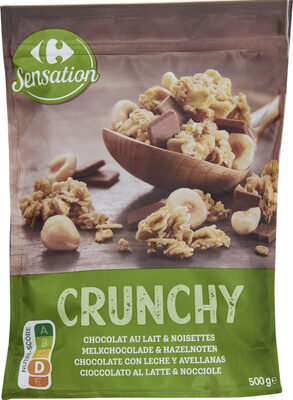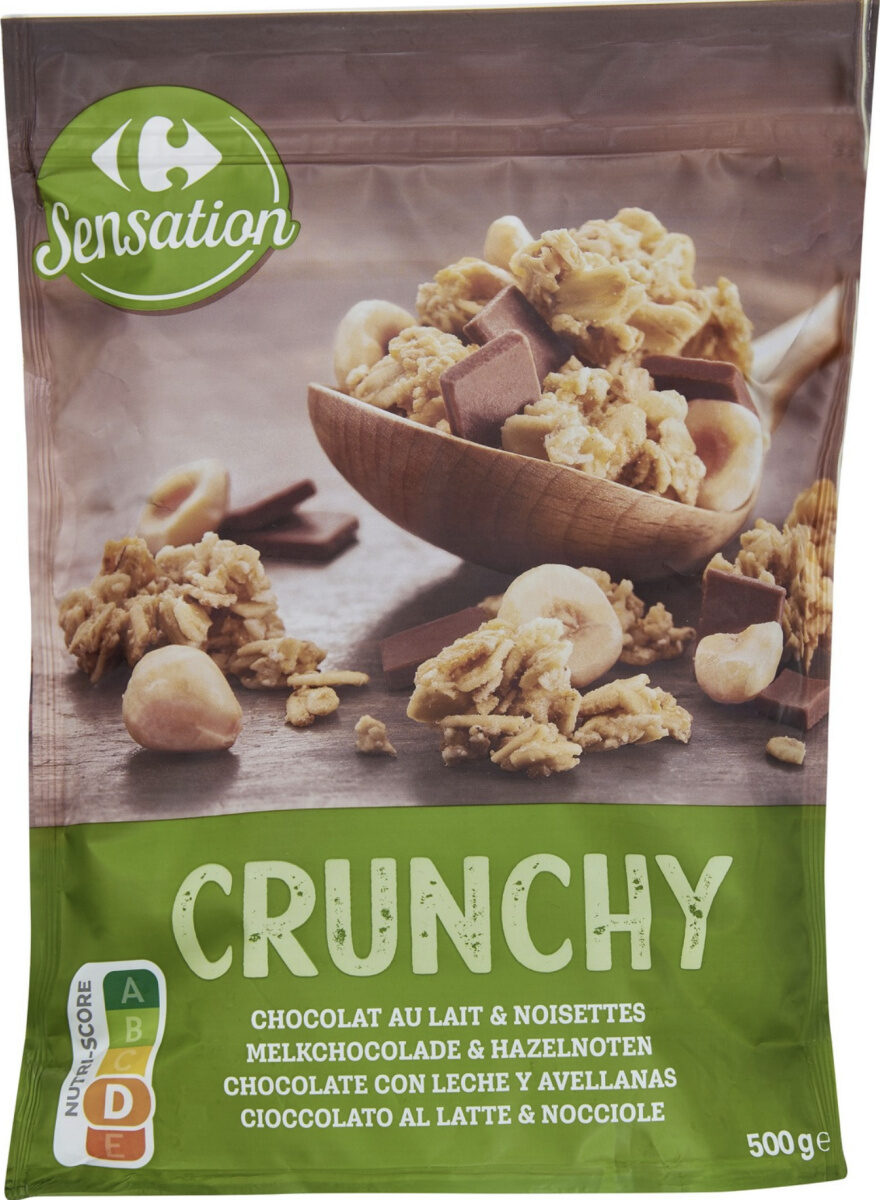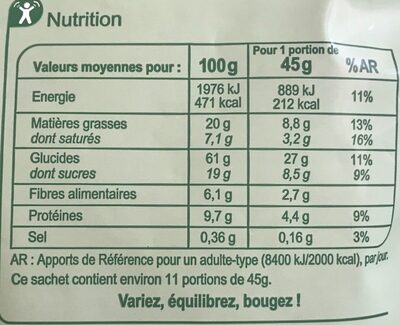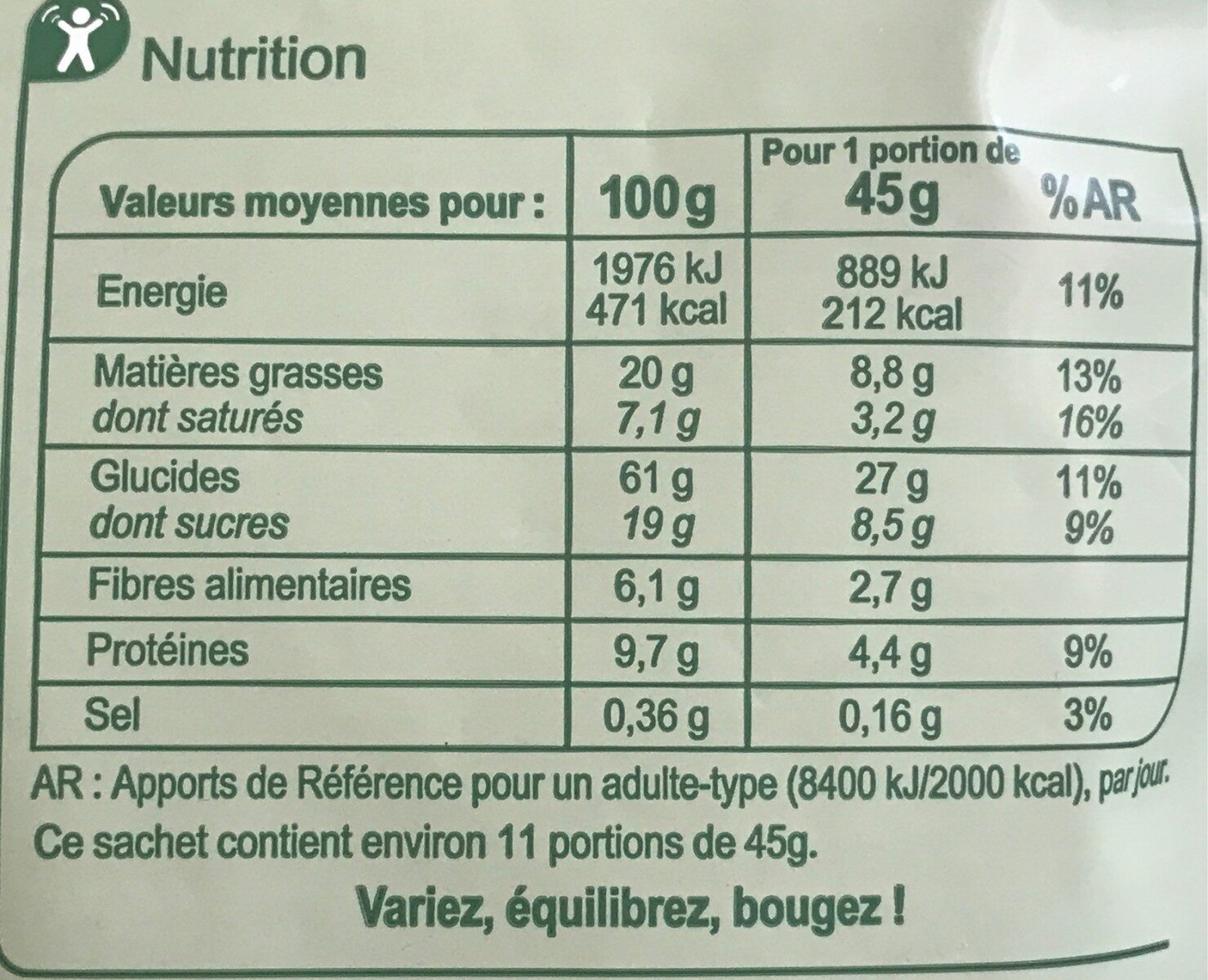Crunchy Chocolat au lait & Noisettes - Carrefour - 500 g
This product page is not complete. You can help to complete it by editing it and adding more data from the photos we have, or by taking more photos using the app for Android or iPhone/iPad. Thank you!
×
Some of the data for this product has been provided directly by the manufacturer Carrefour.
Barra-kodea: 3560071013059 (EAN / EAN-13)
Izen arrunta: Pépites croustillantes de céréales aux carrés de chocolat au lait et aux morceaux de noisettes.
Kopurua: 500 g
Ontziratzea: fr:Sachet refermable
Markak: Carrefour
Kategoriak: en:Plant-based foods and beverages, en:Plant-based foods, en:Breakfasts, en:Cereals and potatoes, en:Cereals and their products, en:Breakfast cereals, en:Chocolate cereals, Muesli, en:Mueslis with chocolate
Etiketak, ziurtagiriak, sariak:
en:Organic, en:EU Organic, en:Made in France, Nutriscore, Nutriscore D, AB Agriculture Biologique

Origin of ingredients: Mundu
Manufacturing or processing places: France
Traceability code: 80302-A
Dendak: Carrefour, carrefour.fr
Saltzen diren herrialdeak: Frantzia, Italia, Polonia, Espainia
Matching with your preferences
Ingurumena
Carbon footprint
Ontziratzea
Transportation
Threatened species
Etiketak
Other information
Preparation: Versez vos céréales dans un bol. Afin de conserver le croustillant de vos céréales, nous vous conseillons d'utiliser du lait froid. Pour un petit déjeuner ou un dessert gourmand, vous pouvez les déguster avec du yaourt ou du fromage blanc.
Conservation conditions: À conserver à l'abri de la lumière. Bien refermer le sachet après chaque utilisation. Pour une dégustation optimale, à consommer de préférence avant le / N° de lot : voir la date indiquée au dos du sachet.
Customer service: Interdis - TSA 91431 - 91343 MASSY Cedex - France.
Report a problem
Datuen iturria
Product added on by kiliweb
Last edit of product page on by alex-off.
Produktuaren orria -gatik editatua driveoff, ecoscore-impact-estimator, foodvisor, inf, moon-rabbit, openfoodfacts-contributors, org-carrefour, packbot, quechoisir, roboto-app, sand72, segundo, shanael, tacite-mass-editor, yogoff, yuka.SFlRdUxKOWF1TlFxd3NNVTJ6Lzd3dnRYenB1U2MzL21KZllPSWc9PQ, yuka.Vko4NkNKWWl1Y0VucC9RdjlSclE2b0p6NDhXUWNtUHFLTEpCSVE9PQ, yuka.WElrUEQ3NGRtTUpScGZZdXp5NkkyZGgrNHArYmZtK1NjTGNOSVE9PQ, yuka.YUpndkVxWU9tOGRVZ2NVdi94M1ozdlJRbjZPWldIK3ZlODRxSVE9PQ, yuka.ZjRNL0ZhOEVvZmhYbjhBa3pEVHNvTnR3NGJ5WFhtZXBDY1lVSWc9PQ, yuka.sY2b0xO6T85zoF3NwEKvll19bdnDmCjNLUD4gFKVm_acIZjEeY5tzpPGFKs, yuka.sY2b0xO6T85zoF3NwEKvln0bStzXniLIGgHuyFPb18qgM4blQvtDvoXkIag.












